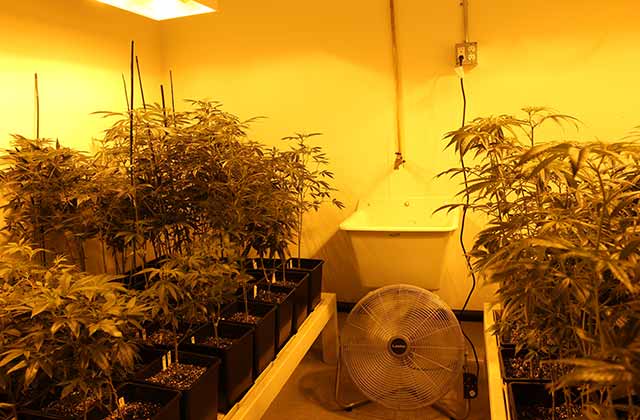One of the most important aspects of growing is knowing how to balance your pH. pH stands for potential hydrogen and is a measure of acidity or alkalinity in a solution, more specifically in your nutrient solution.
Essentially, pH ranges from 0 to 14.0, the lower end of the spectrum is the more acidic and the higher is the more base or alkaline. A pH of 7 is neutral. When your water is lower than 7, there will be more hydrogen ions. An ion is an atom which is a building block of water you use to feed your plants. The hydrogen ion is a big part of H2O, as water is two parts hydrogen to one part oxygen. Now, when your water goes above 7, it becomes more alkaline. The result will be an increase in more hydroxide ions. Like the hydrogen atom, the hydroxide atom is also a part of water, its chemical formulation is OH and it is comprised of an oxygen and a hydrogen atom. This is is super important to know when growing, because your water is a transport vehicle for your nutrients. If there is a problem with the pH, it will create a cascading effect that will result in an imbalance in your plant.
It is also important to state that your nutrients will also be absorbed at different levels of pH, ranging from 5.8 to 6.2 depending on: the medium you have chosen, the strain and the nutrient program. This absorption fluctuates because the various micro, macro and secondary nutrients are attracted to differing charges, either positive or negative. This occurs because the nutrients contain either cations or anions. With cations, ions are attracted to a negative charge, and in anions, ions attracted to a positive charge. Therefore the level of pH in your water will dramatically effect how these ions are absorbed, both by the water – and, in turn, by the plant.
Elements like potassium, calcium, magnesium and iron are attracted to negatively-charged electrons; whereas elements like nitrates and phosphates are attracted to positively-charged electrons.
When growing, there are two types of mediums that you could use: one group is called pH-dependent while the other is called pH-independent. What this means is that some mediums will buffer the pH, while others will not. Of those mediums, good old-fashioned potting soil is one of the most forgiving, because it has a high degree of CEC. CEC stands for “cation exchange capacity.” In a medium, this governs the way in which cations and anions are distributed to the plant. This is why it is super important to be aware of what type of medium you are growing in because you will need to fine-tune your nutrient program and your pH based around the specific medium you are using. Some other mediums with a higher amount of CEC are sphagnum moss/perlite mixes and coco-based mediums. The ones with little to no CEC are mediums like rockwool or hydroton.
I hope after this, everyone that doesn’t have a pH meter or some kind of pH test will run out and get one. I can’t stress enough how important it is to check your pH and to fluctuate it between the safe range of 5.5 to 6.3. This way, you will make the nutrients more bio-available, meaning the plant will be able to more completely absorb all the nutrients you give it. Be aware, as well, of the pH in your medium as that will also effect the way in which the plant absorbs certain nutrients.
In an upcoming article I will look at what is the best growing medium based on your grow situation.
Keep it green and keep on growing!















